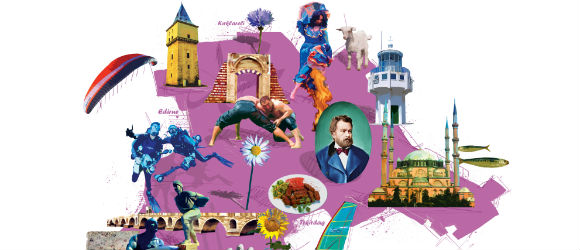Both the Tigris and the Euphrates Rivers rise in central Turkey. The Euphrates has recently been dammed at Keban to provide hydroelectric power for Anatolia. The upper Euphrates consists of two main branches, the more northerly Karasu and the Murat which is longer and carries more water. […]
Read more →The Antakya Archaeology Museum is the archaeology museum of Hatay Province, Turkey. It is known for its extensive collection of Roman and Byzantine Era mosaics. The museum is located in Antakya, the main city of Hatay. Construction of the museum started in 1934 on the recommendation of […]
Read more →At the time that Thrace was a Roman province it comprised the land north of the Dardanelles, the Sea of Marmara, and the Bosphorus to the Balkan Mountains and the Nestus River. All of what is presently European Turkey was then Thrace; it also included southern Bulgaria […]
Read more →Neither the New English Bible nor the Revised Standard Version includes the reference to Trogillium in Paul’s journey from Assus to Miletus. It is, however, in the King James Version in Acts 20:15. Trogillium Is on the cape where the Turkish mainland comes within a kilometer of […]
Read more →The seaport of Antioch in Roman times was at Seleucia. This town was one of many cities founded by and named for Seleucus Nicator. It was located at the mouth of the Orontes River on rocks which form a cliff above the Mediterranean at the foot of […]
Read more →Saint Nicholas (15 March 270 – 6 December 343), was a historic 4th-century saint and Greek Bishop of Myra (Demre-Turkey) in Lycia. Because of the many miracles attributed to his intercession, he is also known as Nikolaos the Wonderworker. He had a reputation for secret gift-giving, such […]
Read more →There is doubt about whether Paul the Apostle actually visited Caesarea Mazaca, and for that matter Tavium, Ancyra, or Pessinus either. The towns are not named in the New Testament but are included in some of the books about Paul’s journeys on the strength of the reference […]
Read more →The site of Tavium has yet to be excavated. It was probably not far from Boğazköy, the Hittite capital, or from Yozgat, and may have been one kilometer west of Büyük Nefes Köy, about 40 kilometers west of Yozgat. The whole area first came under the influence […]
Read more →The Paphlagonians were among the oldest peoples of Asia according to early historians. The region included the triangle of land around Sinope (Sinop), Gangra (Çankiri), and Amastris (Amasra) bordering the Black Sea. One of their early leaders was Pylaemenes, the leader of the Paphlagonians in Homer’s Iliad. […]
Read more →Recently the underground cities at Kaymakli Underground City and Derinkuyu Underground City near Nevşehir have been opened up for tourists. These also were early Christian centers and must have housed several thousand people in the eighth and ninth centuries. They extend downward in the earth for at least eight […]
Read more →









